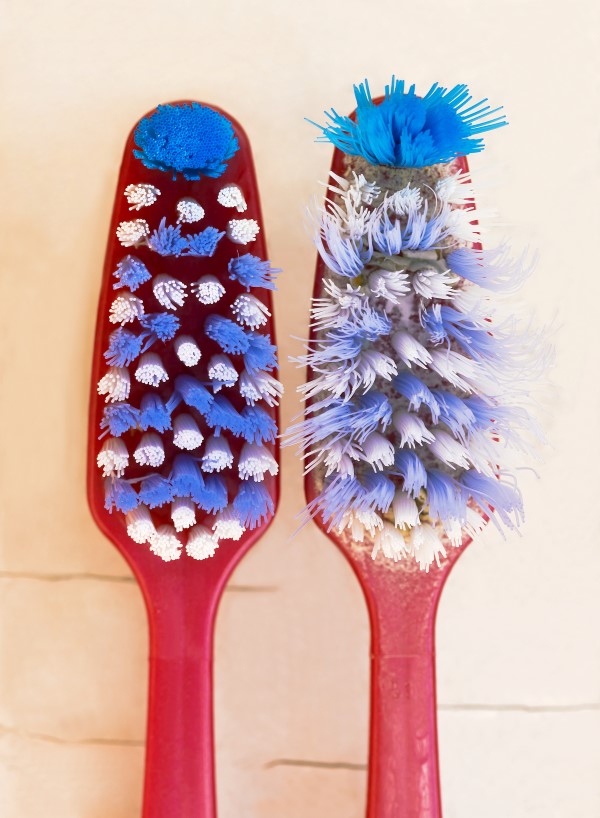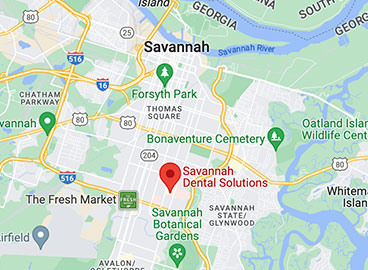If you are committed to maintaining good oral health, having fresh breath, and making sure your pearly whites stay that way, you probably brush your teeth at least twice a day, possibly more. Brushing their teeth is something most people automatically and habitually do without thinking much about it.
And, because it’s something we do in autopilot mode, many of us probably are currently brushing our teeth with worn out and possibly even contaminated toothbrushes. If you can’t remember when you last replaced your toothbrush, it’s probably time. Here are three compelling reasons to replace your toothbrush!
1: A Worn Out Toothbrush is A Less Effective Toothbrush
Arguably the most compelling reason to replace your toothbrush is because if it’s worn out, it’s not cleaning your teeth and gums as effectively as it should be. If you want to avoid the discomfort and expense of dental procedures such as fillings, crowns, and root canals, you should make an effort to replace your toothbrush (and your family’s’ toothbrushes) regularly.
Every time you brush your teeth, fibers on your toothbrush bristles wear down a tiny bit. Eventually, they become so worn that they’re not able to penetrate between the teeth where decay hides. Even if your toothbrush looks just fine, it may be worn out. Often, changes to the stiffness of your brush’s bristles are only visible under a microscope.
2: If You Have Been Sick, Your Toothbrush Could Infect You
If you have been sick, experts recommend replacing your toothbrush after you recover. It’s not likely that your toothbrush will re-infect you with the same illness you’ve recovered from. After all, when you fight an infection, your body develops antibodies that prevent you from being reinfected by the same germs.
It is possible, though, that your immune system may have been weakened by your illness, and you could pick up a different bacterial or viral infection from the germs on your toothbrush. Myriad studies have concluded that toothbrushes harbor a plethora of bacteria, fungi, viruses, and microorganisms. Change your brush regularly to avoid being caught in a cycle of sicknesses!
3: Your Toothbrush May Have Poop on It. Someone Else’s Poop.
If you’re still not convinced it’s important to switch out your toothbrush regularly, perhaps a study published by the American Society for Microbiology will change your mind.
Research analyzing the toothbrushes of college students who shared a communal bathroom found that at least 60% of the students’ toothbrushes were contaminated with fecal bacteria. To make matters worse, the study concluded there was an 80% likelihood that the bacteria on individuals’ toothbrushes came from someone else using the same bathroom.
How is that possible? Each time you flush the toilet, an invisible cloud called a “toilet plume” including aerosolized feces is forced into the air. Studies have shown microorganisms from that plume have travelled as far as sinks – and toothbrushes. Surprisingly, using toothbrush covers did not prevent fecal contamination – by keeping bristles moist longer, they actually encouraged the bacteria to multiply.
How Often is Often Enough to Replace Your Toothbrush?
When you consider all that may be lurking on your toothbrush, you may be tempted to buy them by the case and change your brush after each use. If you follow experts’ advice for caring for your toothbrush, you need not go to such extreme measures. As long as you haven’t been sick, most dentists agree that changing your toothbrush every three months is reasonable.
The reason most people fail to replace their toothbrushes as directed is because they simply forget to do it. Some manual brushes and automatic toothbrush heads are designed with bristles that fade in color to signal when it’s time to replace. You can also remember to replace your brush by setting a reminder in your cellphone calendar. Or, simply try to remember to change your toothbrush about as often as the seasons change.
Additional Toothbrush Best Practices
While there is no way to keep your brush entirely germ free, you can take steps to discourage bacteria from multiplying. After you brush, rinse your toothbrush with water and shake it vigorously. Allow it to dry out between uses, ideally by storing it upright. If possible, store your toothbrush in an enclosed cabinet. Additionally, never share your toothbrush with anyone and make sure its bristles don’t come in contact with the bristles of another toothbrush when you store it.
If you want to make certain that your toothbrush is doing its job effectively and reduce the likelihood it will make you sick, your toothbrush-replacement rule of thumb should be, “When in doubt, switch it out.” After all, manual toothbrushes and even replacement brush heads for fancy automatic toothbrushes are inexpensive. There’s simply no need to be brushing with a worn out or contaminated toothbrush.



